Your new apartment is spacious, close to work, and boasts plenty of natural light and brand new appliances. And the rent isn’t half bad! There’s just one catch or, more accurately, three catches: grimy ceramic tile, tacky vinyl laminate, and out-of-date carpeting.
In many ways apartment living is bliss, but it certainly makes it more difficult to personalize your living space. You’re pretty much stuck with whatever your landlord chooses, and depending on his or her taste (and willingness to re-tile) your flooring could range anywhere from great to tolerable, to god-awful.
You don’t have to stare at an apartment eyesore all day though. Here at Modernize, we’re passionate about helping people make the most of their spaces, no matter where they live. Undesirable flooring is easy enough to hide, as long as you’re willing to find the right kind of cover. So if shag carpeting isn’t exactly your dream material, don’t worry. With these clever, simple disguises, you can have the great apartment with the perfect location —without having to wonder what caused that mystery stain.
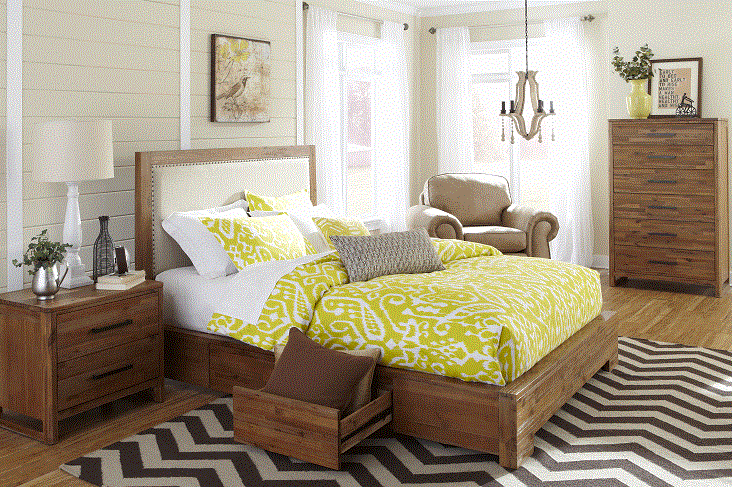
The Obvious Route: A Large Area Rug
The simplest way to hide your landlord’s disagreeable taste is to cover it with a large area rug. This is particularly effective to disguise stains and worn spots. When choosing a rug, remember these decorating rules. First, don’t skimp on the size. You can easily dress up a utility grade rug with a stencil or follow the tips in this tutorial to get a color and pattern that works for your room. Next, think of your area rug as your room’s anchor because, as the Dude says, “it really ties the room together.” So treat it like a floor focal point and give it the focus it deserves!
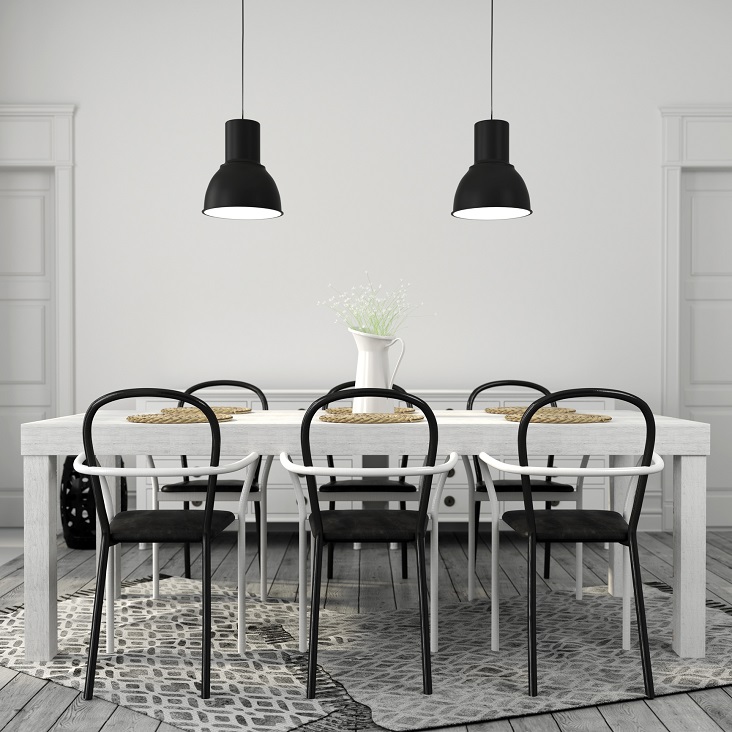
A Look with Many Layers
A huge area rug is a great look if you can get it, but for those of us doling out most of our money for rent, decor needs to be budget-friendly and beautiful. Layering multiple rugs allows you to adopt a luxe, spacious feel without spending a mint. For instance, you can center an inexpensive jute rug underneath a fancier one to cover a larger area. Or you can use a set of several, overlapping accent rugs for a more Bohemian look (and to keep ugly flooring hidden in a long hallway). Or attach two rugs together with carpeting tape. You’ll get twice the look for less —and no one will be any the wiser!
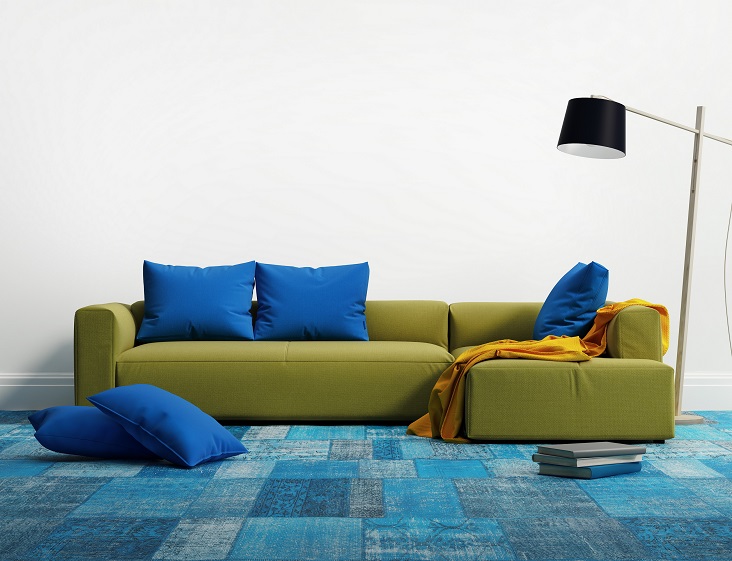
Carpet Tiles to the Rescue
Looking for a way to cover that big stain on the bedroom floor? These versatile squares of carpet can help you out. They come in segments so they can be laid to fit a room of any size, to create an ideal fix for your woeful apartment flooring. The tiles often have a peel-and-stick background or are attached with separate adhesive, which means they’re easy to pull up when it’s time to move to greener pastures. You can even mix and match colors for a truly unique look. The only catch is that they may be a little too rich for a student’s income, so if budget is a concern, seek out an alternative.
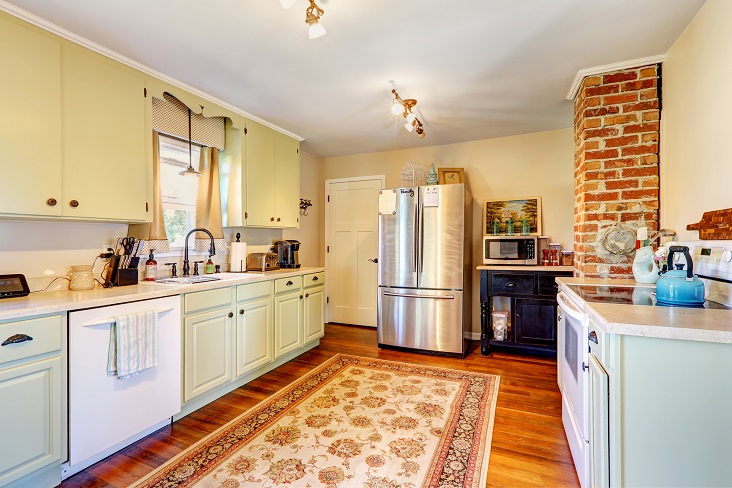
Using Floorcloth for a Clever Kitchen Disguise
Carpeting and rugs are a perfect fix when you need to cover your disaster of a living room floor, but carpet and kitchen tile doesn’t mix well. Luckily there’s another option that will help you forget that ugly laminate underneath —at least until you move out. It’s called a floorcloth, a large decorative square of canvas or vinyl. It’s sort of like an area rug for your kitchen or dining area. But since it’s not carpeting, you can simply wipe or mop up kitchen spills. You can even make your own using this guide. Now we know what we’re doing this weekend!
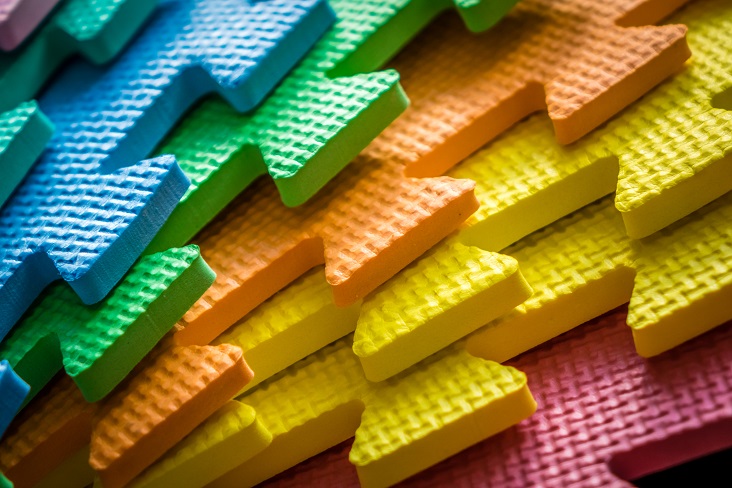
[tweetthis]TIred Of Staring At The Same Boring #Floors? Follow These Ideas To Create An Awesome #Makeover![/tweetthis]
Try Your Luck With Floating Floor Tiles
Not into carpeting? That’s okay; it’s definitely not for everyone. Luckily, there’s another way. Interlocking tiles —available in high impact polymer, rubber, and foam— can be installed over your existing flooring for a unique alternative. You can even buy them in faux wood grain for a chic, durable, and temporary look.
One quick caveat: floating tiles may not work on carpeting. Because the pieces snap together, they’re not exactly waterproof. So any spilled liquids will seep onto the flooring below. When there’s carpeting underneath, it’s a lightning rod for mold, which means you’ll have a lot bigger problems on your hands when you move out.
Tell Your Landlord: “It’s Time for a Change”
This isn’t an ideal solution for everyone, but if you feel like your landlord might give you some leeway to remodel, ask if they’re open to changing out the flooring. This usually works best in small duplexes and complexes where an owner is a single person, not a corporation —especially if you already have a good relationship. If you do try this, read over your lease agreement first to brush up on which repairs your landlord will allow you to make in the first place. Then offer to do some of the labor yourself or pay for the materials and, of course, give your landlord final approval on the new flooring first. With a little wheeling and dealing, you may just have the apartment you’ve always dreamed of —flooring and all!
